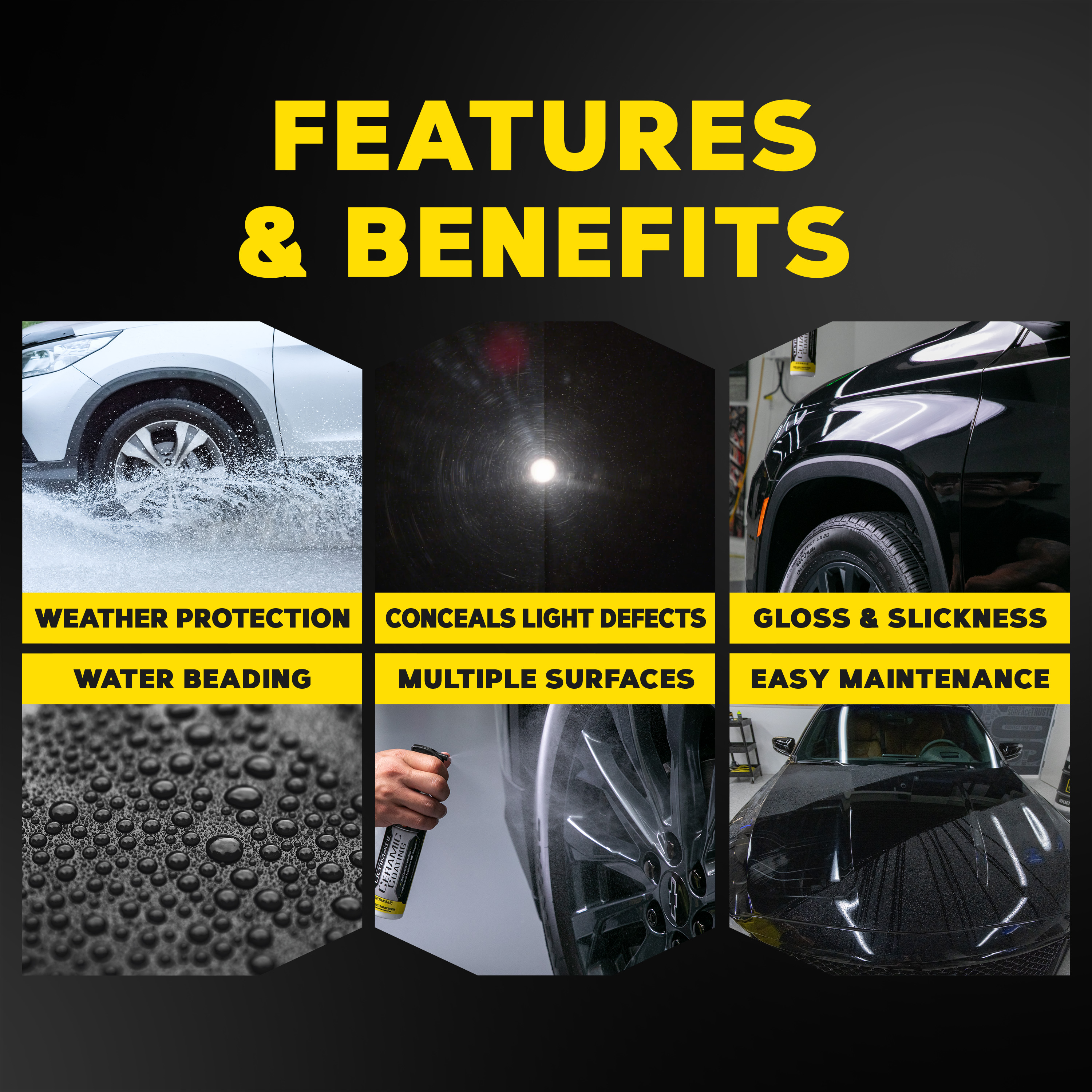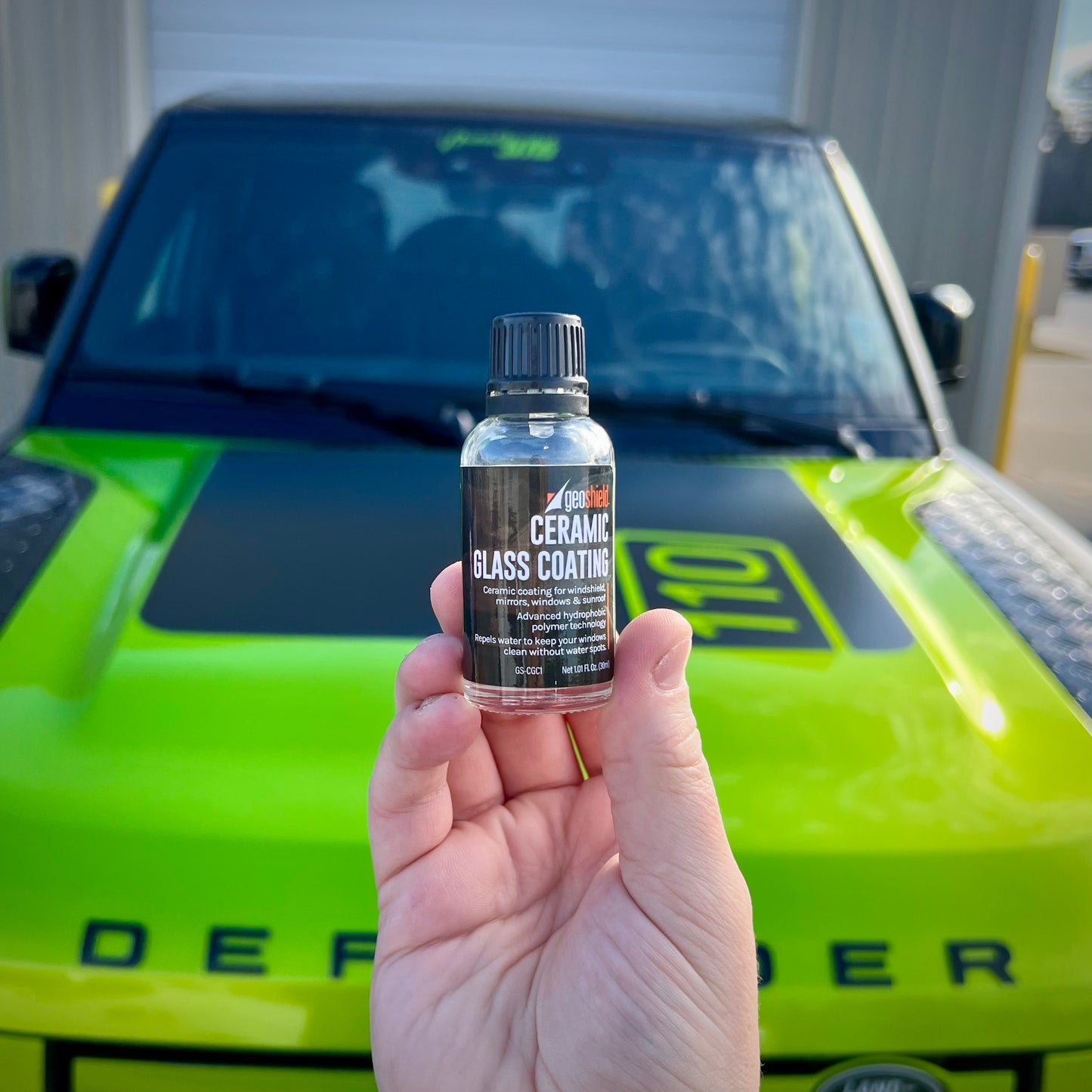The Scientific Research Behind Ceramic Layer: Why It's Crucial for Your Automobile
Understanding the scientific research behind ceramic layer discloses its importance for automobile security and maintenance. As we check out the nuances of ceramic coating, the effects for both the durability and visual quality of your automobile become increasingly clear.
What Is Ceramic Finishing?
Ceramic finishing is a cutting-edge protective layer used to a vehicle's exterior, created to enhance its sturdiness and appearance. Making up a fluid polymer that chemically bonds with the factory paint, this innovative innovation produces a durable guard against ecological pollutants such as dirt, UV rays, bird droppings, and road salt. Unlike conventional wax or sealants, which might require frequent reapplication, ceramic coverings supply durable security that can withstand for numerous years with appropriate maintenance.

Along with its safety top qualities, ceramic coating can likewise add to the automobile's resale value by protecting against and protecting the paintwork oxidation. Overall, ceramic finishing stands for a considerable improvement in auto care, providing car owners with an efficient service for maintaining their investment for many years ahead.
How Ceramic Finish Works
The process behind ceramic covering involves an intricate interaction in between the layer's molecular structure and the automobile's paint surface. When applied to a car's outside, ceramic coverings are composed largely of silica dioxide (SiO ?) and various other chemical compounds that develop a resilient layer of security. Upon application, the finishing forms a semi-permanent bond with the paint, thanks to its nanoscale particles that permeate the microscopic pores of the surface area.
As the layer remedies, it goes through a chemical response that improves its firmness and hydrophobic residential or commercial properties. This response solidifies the covering, successfully developing a safety barrier that is resistant to environmental contaminants such as dirt, UV rays, and chemical etching. The outcome is a surface that wards off water, causing it to grain up and roll off, hence lowering the threat of water places and spots.
Moreover, the level of smoothness of the ceramic layer diminishes rubbing, which aids to stop scratches and swirl marks. By sticking securely to the paint, the coating likewise assists in keeping the vehicle's visual charm with time, inevitably preserving its worth and appearance. This elaborate process highlights the sophisticated technology behind ceramic coverings, making them a remarkable option for automobile security.
Key Benefits of Ceramic Finish
Typically considered a game-changer in automobile upkeep, ceramic covering uses many advantages that prolong beyond plain appearances. One of the most significant benefits is its premium security against environmental pollutants. Unlike typical wax, ceramic finishes produce a strong chemical bond with the automobile's paint, offering a sturdy barrier versus UV rays, bird droppings, tree sap, and roadway salt.
Additionally, ceramic coverings have hydrophobic residential properties, which indicates they drive away water and other liquids. This function not just helps in maintaining the car cleaner for longer durations yet additionally facilitates less complicated washing, as read this post here dust and crud are less most likely to stick to the surface.
Additionally, ceramic finishes improve the car's radiate and gloss, making certain that it preserves a showroom-like appearance over time - So Fresh & So Clean Detailers Ceramic Coating. The longevity of ceramic finishings is an additional compelling advantage; they can last numerous years with correct upkeep, therefore decreasing the frequency of reapplication contrasted to conventional waxes
Contrast With Typical Wax
When contrasting ceramic layers to conventional wax, it's important to identify the significant distinctions in resilience and protection. Ceramic coatings are crafted from advanced nanotechnology, offering a robust layer of security that can last a number of years. On the other hand, standard wax normally lasts just a couple of weeks to a few months, calling for regular reapplication to maintain its efficiency.
The chemical composition of ceramic coverings enables them to bond at a molecular degree with the automobile's paint, creating a long lasting guard versus ecological contaminants such as bird droppings, tree sap, and UV rays - So Fresh & So Clean Detailers Ceramic Coating. Traditional wax, while providing a momentary sparkle, lacks this degree of bonding, making it much more at risk to degradation from extreme climate and chemicals

Upkeep Tips for Ceramic Covering
Making sure the longevity and performance of a ceramic finishing needs regular maintenance. To optimize the benefits of your ceramic covering, normal washing is necessary.
Furthermore, take into consideration using a ceramic upkeep spray or booster every few months. These products boost the hydrophobic residential or commercial properties of the covering and add an additional layer of protection. When drying your lorry, make use of a microfiber towel to stop water spots.
Prevent automated automobile cleans with brushes, as they can jeopardize the stability of the finishing. Instead, choose touchless cleans or hand cleaning methods. Remove them immediately to stop damage. if your lorry experiences challenging pollutants like tree sap or bird droppings.
Last but not least, routine assessments are crucial. Seek any kind of signs of wear or damages to the layer, and speak with a specialist detailer if repair work or reapplication is required. official statement By complying with these maintenance tips, you can guarantee your ceramic coating continues to be efficient and your vehicle maintains its pristine look.
Conclusion
Finally, ceramic coating stands for a significant advancement in car security modern technology, offering a durable and resilient barrier against ecological contaminants. Its special make-up not only enhances the visual allure of the vehicle but additionally streamlines upkeep routines contrasted to standard wax. The remarkable benefits of ceramic finishing make it an essential investment for vehicle owners seeking to preserve their lorry's appearance and stability gradually. Embracing this ingenious solution contributes to enhanced lorry long life and general value.
Comprehending the scientific research behind ceramic finish discloses its relevance for car security and upkeep (So Fresh & So Clean Detailers Home Page Ceramic Coating).The process behind ceramic finish involves a complicated communication between the layer's molecular structure and the car's paint surface area. Unlike conventional wax, ceramic finishings create a strong chemical bond with the vehicle's paint, offering a durable barrier against UV rays, bird droppings, tree sap, and roadway salt
Ultimately, while conventional wax might be more budget-friendly originally, the lasting advantages of ceramic coverings make them a superior choice for vehicle defense.
